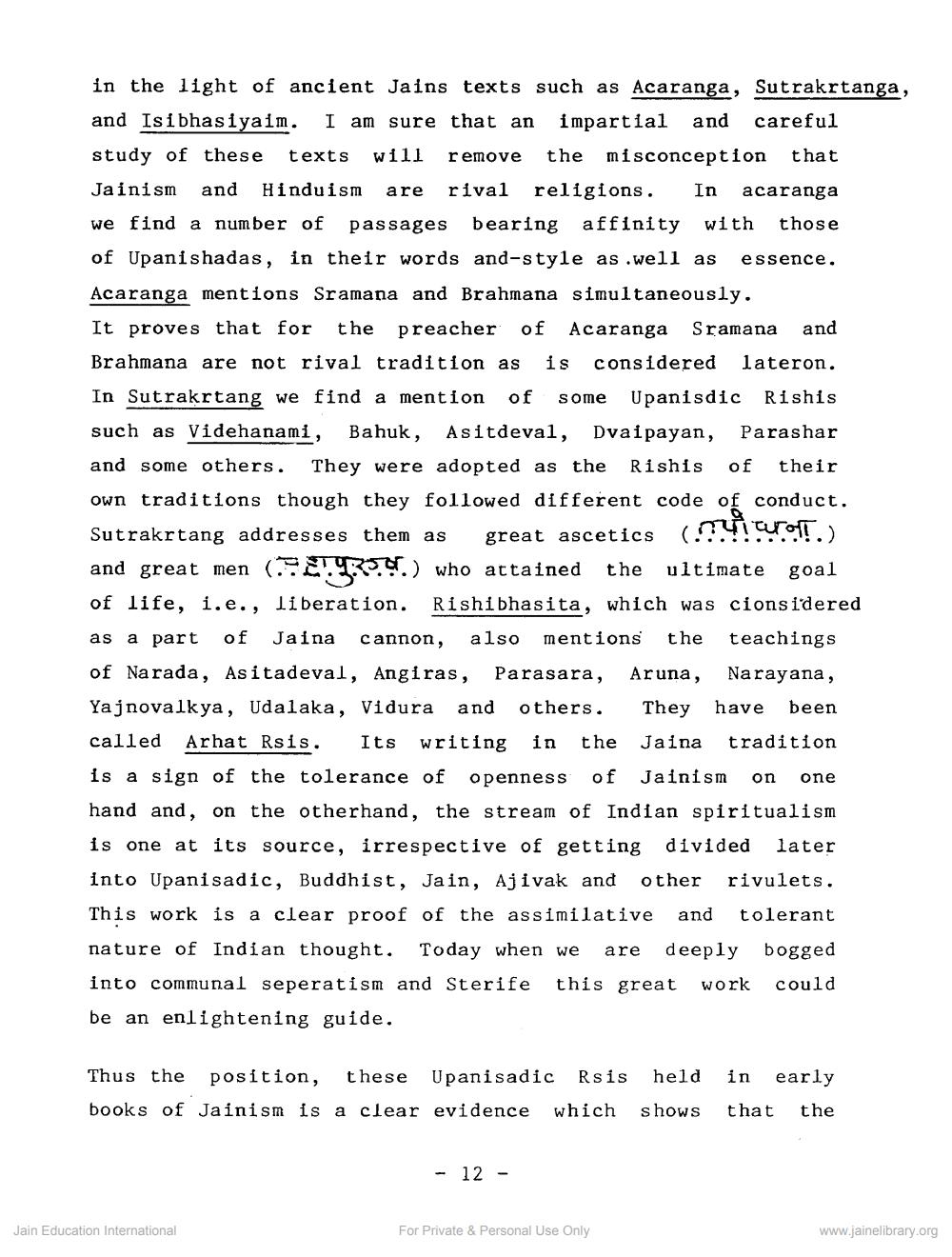________________
in the light of ancient Jains texts such as Acaranga, Sutrakrtanga, and Isibhasiyaim. I am sure that an impartial and careful study of these texts will remove the misconception that Jainism and Hinduism are rival religions. In acaranga we find a number of passages bearing affinity with those of Upanishadas, in their words and-style as .well as essence. Acaranga mentions Sramana and Brahmana simultaneously. It proves that for the preacher of Acaranga Sramana and Brahmana are not rival tradition as is considered lateron. In Sutrakrtang we find a mention of some Upanisdic Rishis such as Videhanami, Bahuk, Asitdeval, Dvaipayan, Parashar and some others. They were adopted as the Rishis of their own traditions though they followed different code of conduct. Sutrakrtang addresses them as great ascetics (. TUTOTT.) and great men (. ..) who attained the ultimate goal of life, i.e., liberation. Rishibhasita, which was cionsidered as a part of Jaina cannon, also mentions the teachings of Narada, Asitadeval, Angiras, Parasara, Aruna, Narayana, Yajnovalkya, Udalaka, Vidura and others. They have been called Arhat Rsis. Its writing in the Jaina tradition is a sign of the tolerance of openness of Jainism on one hand and, on the otherhand, the stream of Indian spiritualism is one at its source, irrespective of getting divided later into Upanisadic, Buddhist, Jain, Ajivak and other rivulets. This work is a clear proof of the assimilative and tolerant nature of Indian thought. Today when we are deeply bogged into communal seperatism and Sterife this great work could be an enlightening guide.
Thus the position, these Upanisadic Rsis held in early books of Jainism is a clear evidence which shows that the
- 12 -
Jain Education International
For Private & Personal Use Only
www.jainelibrary.org




